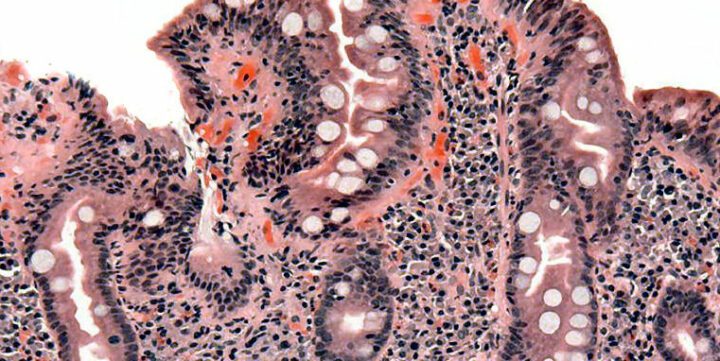Coeliac Awareness Week 13-20th March
March 7, 2023
Coeliac Awareness Week 2023
Although 1.5% of Australians experience Coeliac Disease, approximately 80% remain undiagnosed for a majority of their life. This is far from ideal for the sufferer, and as a progressive disease, the symptoms will continue to worsen throughout the lifespan. Through improved awareness of the disease, this undiagnosed population will hopefully decline, assisting to bring better health outcomes to the wider community.
In Australia, Coeliac Awareness Week is March 13-20 2023. Coeliac Awareness Week is all about getting people talking about their symptoms, and more importantly, taking action to get themselves checked. Take advantage of this opportunity to revisit your understanding of the condition, and the pathways to diagnosis.
The History of Coeliac Disease
The term ‘coeliac’ is derived from the Greek word ‘abdominal’ and was first used in the 19th century in the transcription of Aretaeus of Cappadocia’s description of the disease. It is believed that coeliac disease first began in humans following the first agricultural revolution. As the earlier human diets began to expand, including adding in grains, domesticated livestock and cultivated crops, most bodies were able to adapt. However, some did not and certain food sensitivities, intolerances and coeliac disease made their first appearances in human history.
Before the discovery of the protein ‘gluten’ (the true trigger for coeliac disease), many treatments and diets were tried, including strict rice, mussel and even banana diets (which weren’t ultimately successful). It wasn’t until World War II that first wheat and finally gluten began to come into focus as the culprit, as suspected by a Dutch paediatrician by the name of Willem Karel Dicke. He made the connection as his homeland experienced the height of the ‘Dutch Famine’ and whilst bread became unavailable, he noticed mortality rates for coeliac disease declined rapidly.
What causes Coeliac Disease?
It wasn’t until the 1970s that Coeliac Disease was recognised as an autoimmune disease, connected to the HLA-DQ2 gene, along with dermatitis herpetiformis. Coeliac disease is triggered by the ingestion of gluten, a protein found in wheat, barley, and rye. When a person with coeliac disease consumes gluten, their immune system reacts by producing antibodies that attack the lining of the small intestine. This immune response damages the villi, reducing the absorption of nutrients from food, including the absorption of iron – leading to anaemia in most cases.
The exact causes of coeliac disease are not fully understood, but research suggests that a combination of genetic and environmental factors play a role. Certain genes, including the HLA-DQ2 and HLA-DQ8 genes, are associated with an increased risk of developing coeliac disease. However, not everyone with these genes will develop the condition, indicating that environmental factors also play a role.
Environmental factors that have been implicated in the development of coeliac disease include infections, such as rotavirus, that may trigger the immune system to react to gluten. Other factors that may contribute to the development of coeliac disease include changes in the gut microbiome, exposure to certain chemicals, and hormonal changes.
Overall, the causes of coeliac disease are complex and involve a combination of genetic and environmental factors that interact to trigger the immune response to gluten.
Common Symptoms of Coeliac Disease
The symptoms of coeliac disease can vary widely and can be different for each individual. Some people with coeliac disease may experience no symptoms at all, while others may experience severe symptoms. The symptoms of coeliac disease can also overlap with those of other digestive disorders, making it difficult to diagnose.
Some common symptoms that may lead to a diagnosis of coeliac disease include:
– Digestive problems: This includes symptoms such as bloating, gas, abdominal pain, diarrhoea, constipation, and nausea.
– Fatigue: Many people with coeliac disease report feeling tired or exhausted, even after getting enough rest.
– Weight loss: Unintentional weight loss can occur due to malabsorption of nutrients.
– Anaemia: Iron-deficiency anaemia is common in people with coeliac disease due to malabsorption of iron.
– Skin rash: Some people with coeliac disease develop a skin rash called dermatitis herpetiformis.
– Joint pain: Joint pain and stiffness can occur in people with coeliac disease.
– Mood disorders: Some people with coeliac disease experience depression, anxiety, and irritability.
It is important to obtain a blood test and small intestine biopsy to determine an accurate diagnosis of coeliac disease. You can review the pathway to disease diagnosis via this article: https://www1.racgp.org.au/ajgp/2018/january-february/interpreting-tests-for-coeliac- disease-(1)












